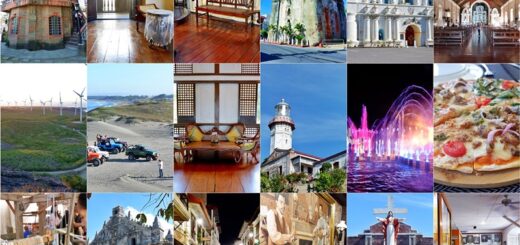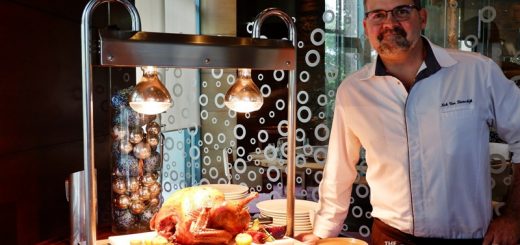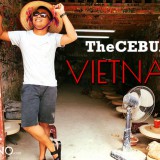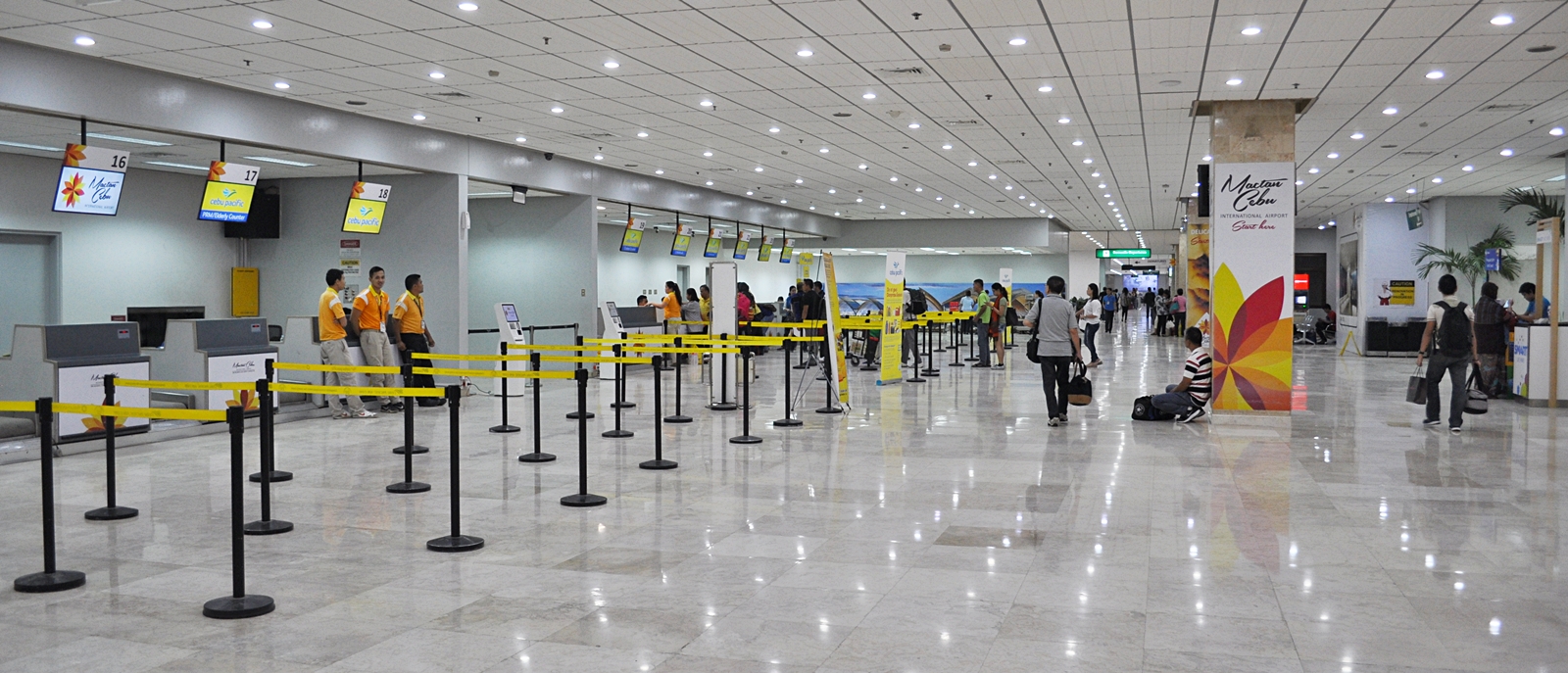TheCebuano in Vietnam: 10 Things to Know Before Flying to Hanoi
In recent years, more and more Cebuanos are adding Hanoi, Vietnam to their travel bucket list. This is not surprising and here are the three main reasons why:
1. Hanoi, Vietnam is only several hours away from Cebu
2. Cebuanos who want to visit several Southeast Asian countries in one go often make Hanoi their starting point
3. Local airlines are now offering direct, nonstop, and connecting flights to Hanoi
Are you thinking of leaving our beloved Cebu for a bit to explore the beautiful city of Hanoi? In this premiere edition of TheCebuano Travel Guide, we list down 10 important things you should know before booking that flight. Enjoy and xin chao!
1. It is VERY Similar to Cebu

The city of Hanoi is very much like our beloved Cebu. Although it is the capital city of Vietnam, Hanoi is not as hectic and as busy as Ho Chi Minh. Like Cebu City (when compared to Manila,) Hanoi is more laid back and more traditional and conservative. The city is also a lot safer and definitely a lot less expensive compared to Ho Chi Minh City.
2. It’s Visa-Free

Cebuano tourists can enter Vietnam via the Noi Bai International Airport in Hanoi without the need of a tourist visa. Filipino citizens can stay for a maximum of three weeks or 21 days. If you intend to visit other countries during your trip, three weeks in more than enough. But if you want to stay longer, you can always check out the visa-on-arrival option. Like its name suggests, you simply have to process everything online and once you land in Hanoi, your visa will be waiting for you.
3. Be Ready to Interact

Hanoians are warm and very friendly. And if they notice that you’re not a local, they won’t be afraid to interact or start a conversation. The common greeting is ‘xin chao’ which means hello. Before talking, they will usually first look at you and guess your nationality. It is easy to be mistaken for Indonesian, Malaysian, Cambodian, or even Vietnamese. So, if they ask if you are “Indonesia,” “Malaysia,” or Korean saram, you can reply that you are “Pilipin.” They will almost immediately begin talking about President Duterte or Marian Rivera.
4. Learn How to Communicate

Although there’s a big chance that you will be communicating with locals who can speak English, it is still better to come prepared. Many Vietnamese can speak good English. However, a good number of them know only a few common words and expressions. Just to be safe, be ready with a mobile translator (Tip: install the Google Translate app and download the Vietnamese language pack.) Also, when buying something, just whip out your phone, open the calculator app, and show to the vendor. They will automatically know what this means and will proceed to type the amount on your phone. After that, you can try your haggling skills. Using the translation app, of course.
5. Motorcycles Everywhere

Motorcycle is the most popular mode of transportation in Vietnam. And during rush hour, it is a pretty normal sight to see an ocean of motorbikes speeding through the city’s major thoroughfares. So, given the number of units running on a daily basis, it is important to take extra caution when crossing the street as motorcycles can come from virtually any direction.
If you wish to use a motorbike yourself, remember that you must first have your driving permit converted into a Vietnamese driving license at the Office of Traffic and Public Works. Also, always wear a safety helmet if you do not want to get in trouble.
6. Public Transport is Inexpensive

If you do not know how to drive a motorcycle (or have no intention of driving one in Hanoi,) you can always have someone do it for you. Grab Bike is a huge deal in Hanoi and they are basically everywhere. If you prefer comfort, you can flag metered cabs. Drivers are generally honest and polite. Flag down rate is usually around 5,000 VND or only about PhP11.00. If you want an even cheaper alternative, you can get on a public bus which normally only costs around 9,000 VND or about PhP20.00 to reach destinations as far as 30 miles away.
7. Hot Summers and Cold Winters

Unlike Ho Chi Minh which only has the wet and dry season, Hanoi is a bit more interesting. The city has hot wet summers and cold dry winters. During summer (April to May,) Hanoi can be extremely hot with temperature reaching up to 35 degrees. And during winter, things can also get pretty cold with temperature dropping to 10 degrees. If you want to explore Hanoi to the fullest, the best time to come is during autumn (June to August) or spring (February to April.) However, if you prefer to wear winter clothes as you eat your pho, the best time to go is from December to January.
8. The Food is Delicious (and Very Easy to Find)

Like most Vietnamese cities, Hanoi is a foodie mecca. However, unlike Ho Chi Minh which is overrun by cafes and restaurants that serve international dishes, Hanoi remains focused on traditional favorites. Hanoians love to eat the popular pho and bun cha (in photo.) A bowl of pho or bun cha can generally just cost you around 25,000 VND or about PhP 55.00. A lot of restaurants serving these dishes can be found in almost all street corners. Some pop-up ‘carenderias’ which only open at night, can even take over full streets when traffic is lighter.
9. There are Jollibees (and a McDonald’s) in Hanoi

If you can’t live without your local fastfood favorites or is afraid that you might not totally ‘dig’ Vietnamese cuisine, there is no need to fret. There are a lot of fastfood restaurants in the city. In fact, there are at least three Jollibees in Hanoi and one in Bac Ninh (40 minutes from the city.) And just recently, popular international fastfood chain McDonald’s also opened its very first branch in the Hoan Kiem Lake area. Other familiar brands also available in Hanoi include Dunkin Donuts, Lotteria, Popeyes, and KFC.
10. Fellow Filipinos Everywhere

Like most places, Vietnam has a considerable number of Filipinos residents. In fact, the number of Filipinos in Vietnam continue to grow each year as the demand for Pinoy talent and expertise continues to rise. A good number of Filipinos come to Hanoi to work as school/English teachers (with some of them even competing with native speakers in high-paying positions in various language centers.) Other fields popular among Filipinos include engineering and electronics. So when you’re up for a little conversation in Filipino or Cebuano, simply go to a crowded place and keep your ears open. You’ll hear a Filipino in less than ten minutes. Guaranteed. 🙂
So there you have it! I hope this list helped you in finally giving that long-planned Vietnam trip a go. If you found this list helpful, don’t forget to leave a comment and share with your friends!
TheCebuano Travel Guide is a brand new series on TheCebuano which focuses on travel tips, tricks, and guides aimed at making every Cebuano’s out-of-the country travels as pleasant and as hassle-free as possible. Stay tuned for more travel tips on other destinations! 🙂

























17 Responses
[…] trip to the Old Quarter is actually also a quick lesson on Vietnamese history and culture. If you’re a keen observer, you will easily notice the different elements […]
[…] City of Bac Ninh in northern Vietnam is a pretty small city. Located 30 minutes from the capital city of Hanoi, Bac Ninh is home to some […]
[…] Vietnam keeps a record of its past in several museums found all over the country. One of these national museums is the Vietnam Military History Museum which is located in central Hanoi. Let us take a look at what’s inside this amazing tourist destination in Hanoi, Vietnam. […]
[…] One Pillar Pagoda is one of Hanoi, Vietnam‘s most visited and most important historical structures. In fact, this Buddhist temple, […]
[…] So, without further ado, let’s take a look at the chaotic but beautiful Dong Xuan public market in Hanoi, Vietnam. […]
[…] year-long stay in Vietnam was nothing short of amazing. I guess I can say that the whole thing was one of my most […]
[…] holiday break in Vietnam is long and lonely. That’s what I found out the hard way when I experienced it personally. […]
[…] my last month in Vietnam, I got an invite from the Relic Management Board of the Province of Bac Ninh to do a special […]
[…] Province, is known as the City of Eternal Spring for its unique temperate climate. In most parts of Vietnam, you can get extremely hot summers and super cold winters. In Da Lat, however, the temperature […]
[…] of the most important historical marvels in the city of Bac Ninh in Vietnam is the But Thap Temple. Located near the Đuống River dyke in the Thuận Thành District, the […]
[…] One of the many points of interest in the beautiful city of Hanoi is the Imperial Citadel of Thang Long or simply the Hanoi Citadel. Considered a must-visit, the citadel features age-old relics, ruins, and structures that show the rich and colorful history of Vietnam. […]
[…] strolls. And that accidental discovery has helped me understand the culture and history of Northern Vietnam a little bit […]
[…] like the Philippines from January to December. But I was wrong. Very wrong. See, I first visited Vietnam last July. It was the summer season and that trip sort of solidified my belief that Vietnam is […]
[…] never really got a chance to fully explore the capital city of Hanoi. So, during my second trip to Vietnam, I made it a point to take a closer look at this lovely city. I wanted to especially focus on what […]
[…] out my photos of Vietnam‘s Bat Trang Pottery […]
[…] city of Hanoi, age-old structures fill every tourist’s must-visit list. And I tell you, with Vietnam‘s lengthy and colorful history, this list can be quite long. One of the structures on this […]
[…] that was it. Which of these Vietnam food choices have you tried? Let me know in the comments […]